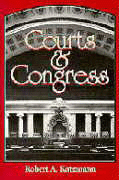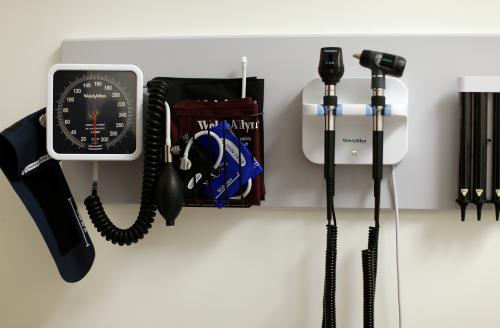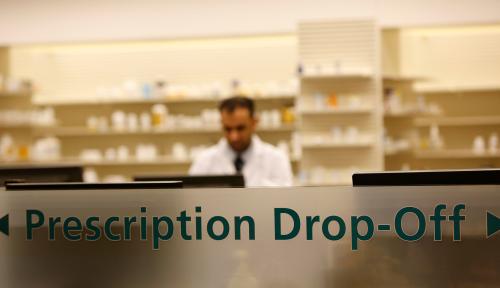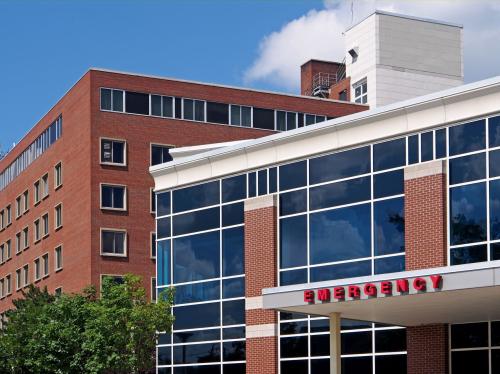What’s the latest in health policy research? The Essential Scan, produced by the USC-Brookings Schaeffer Initiative for Health Policy, aims to help keep you informed on the latest research and what it means for policymakers. If you’d like to receive the biweekly Essential Scan by email, you can sign up here.
Additional Branded Competition Prompts Incumbent Drug Manufacturers to Raise Prices
Study by: Alice M. Ellyson and Anirban Basu
Brand name drugs account for only 10 percent of prescriptions dispensed in the US, but are responsible for 72 percent of all drug spending. Although plenty of research has demonstrated how prices for incumbent pharmaceutical drugs respond to generic competition, little attention has been paid to pricing behavior in anticipation of branded competition. This new study develops a model of pricing strategies for incumbent drug manufacturers anticipating branded competition and uses the insulin market as a natural experiment to measure the effect of drug pipeline pressure on prices of incumbent drugs. The authors find that the price of insulin was unaffected by the news that three potential competitors had successfully completed Phase 3 of FDA trials and neared market entry, but they also found that news of two other competitors later reaching the same point each increased the price of a standard insulin dose by about $30 per month. The authors conclude that incumbent firms have a strategic incentive to raise prices as the likelihood of competition from another brand name patented drug increases. Full article here.
Enrollment in Medicare ACOs Moderately Improves Appropriateness of Cancer Screenings
Study by: Matthew J. Resnick, Amy J. Graves, Sunita Thapa, Robert Gambrel, Mark D. Tyson, Daniel Lee, Melinda B. Buntin, and David F. Penson
Since 2011, CMS has become increasingly reliant on Accountable Care Organizations (ACOs) as a method of achieving increased accountability, higher quality of care, and lower costs through the promise of shared savings. A new study attempts to quantify the effect of ACO enrollment on appropriateness of care delivery through cancer screening programs (which have the dual aim of promoting screening among patients likely to benefit and discouraging screening in patients unlikely to benefit). Using Medicare enrollment and claims data from 2006 through 2013, researchers identified breast, colorectal, and prostate cancer screenings and determined appropriateness based on patient age and predicted survival. The results suggest that ACO enrollment reduces breast cancer overscreening, increases appropriate colorectal cancer screening, and reduces both appropriate and inappropriate prostate cancer screening. While the results for breast and colorectal cancer screenings seem promising, the magnitude of the effect is not strong enough to make a definitive statement on whether or not ACO enrollment promotes appropriateness of cancer screenings.Full article here.
ACA Marketplace Coverage Decreased Uninsured Rates Among Previously Uninsured Adults, Increased Access to Medical Care
Study By: Anna Goldman, Danny McCormick, Jennifer Haas, and Benjamin Sommers
The Affordable Care Act’s Health Insurance Marketplaces were established to create affordable, accessible health care for low and middle-income populations. A new quasi-experimental analysis uses longitudinal national survey data from 2011 to 2014 to compare previously uninsured adults eligible for subsidized Marketplace coverage to those who had employer-sponsored coverage before the ACA in the same income range. The analysis found Marketplace coverage decreased uninsurance rates significantly among previously uninsured adults by 10.8 percent while also decreasing barriers to medical care, and increasing the use of outpatient services and prescription drugs. Low-income adults who were eligible to receive cost-sharing reductions were found to have received the most benefits. Researchers also noted that more than half of those eligible for insurance were still uninsured at the end of 2014. These findings suggest that while the Marketplaces may have been hugely successful in decreasing the uninsured rate, more outreach is likely needed to link low- and middle-income individuals to affordable care. Full article here.
Hospitalizations Cause Only 4 Percent of Personal Bankruptcies Among Nonelderly US Adults
Study by: Carlos Dobkin, Amy Finkelstein, Raymond Kluender, and Matthew J. Notowidigdo
Medical bankruptcies are often branded by policymakers and mainstream news reports as a leading cause of personal bankruptcy in the United States and thus indicative of a wider problem within the American healthcare system. A novel study linked hospital data on California adults ages 25 to 64 with detailed credit records to show that hospitalization increased the chances an individual would go bankrupt. However, the authors also showed that the magnitude of such bankruptcies was substantially smaller than previously thought-comprising only 4 percent of personal bankruptcies among nonelderly US adults. The authors point out that this isn’t to say hospital admissions do not cause financial hardship for families, but rather that overemphasizing medical bankruptcies may distract from understanding the true economic hardships families face. Full article here.











Commentary
The essential scan: Top findings in health policy research
April 5, 2018